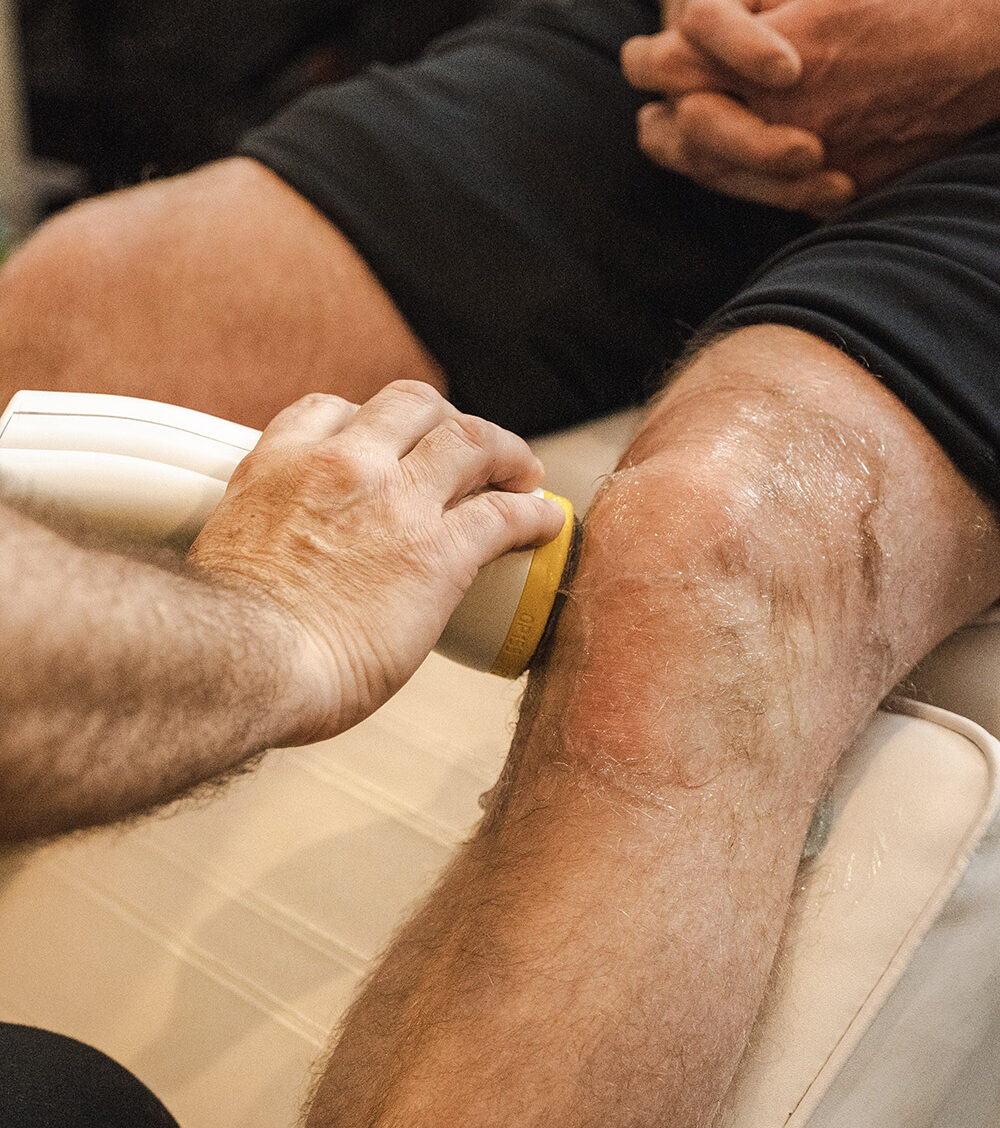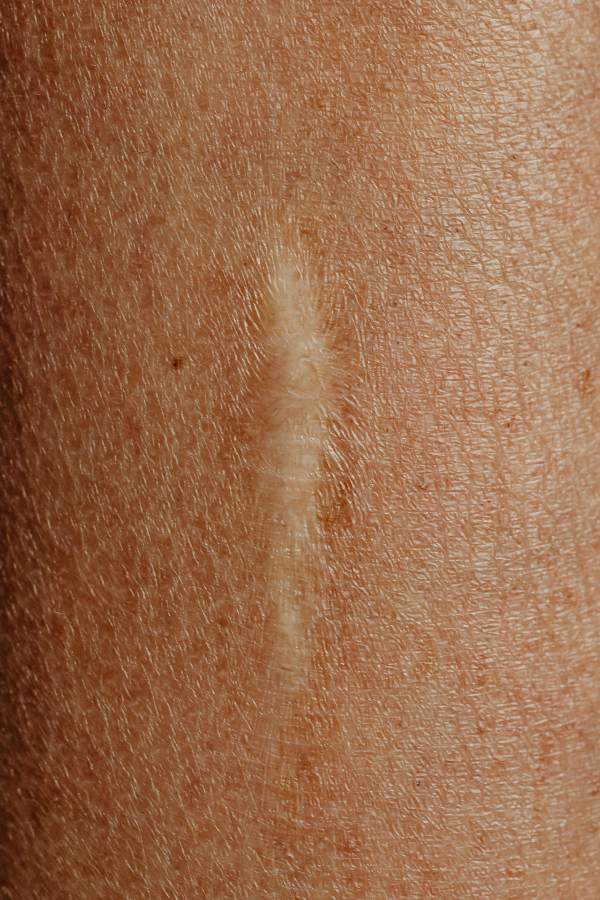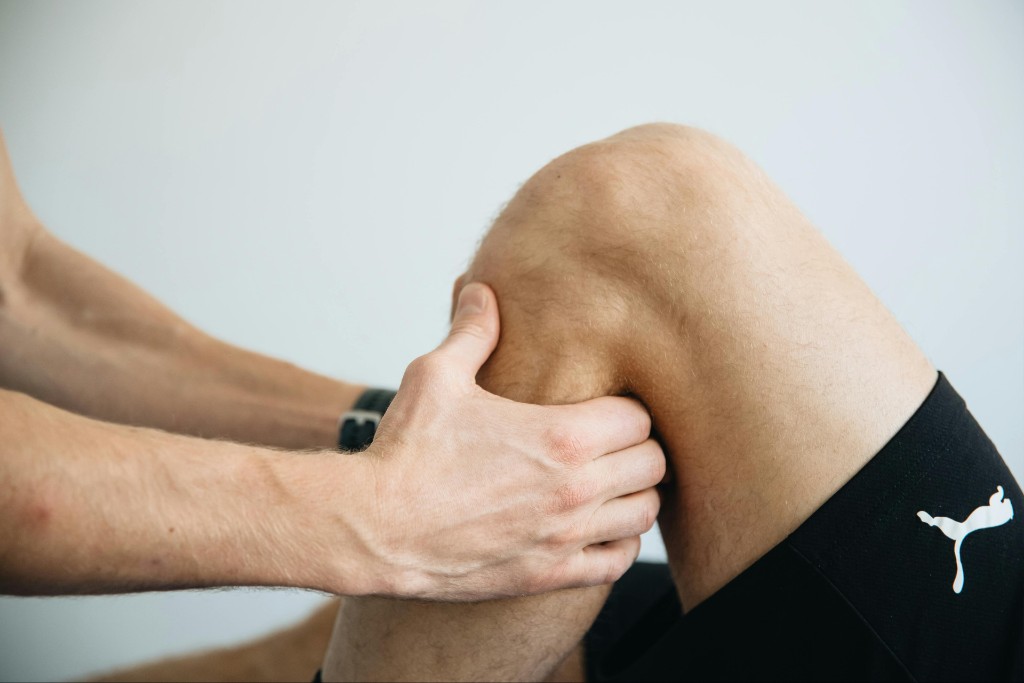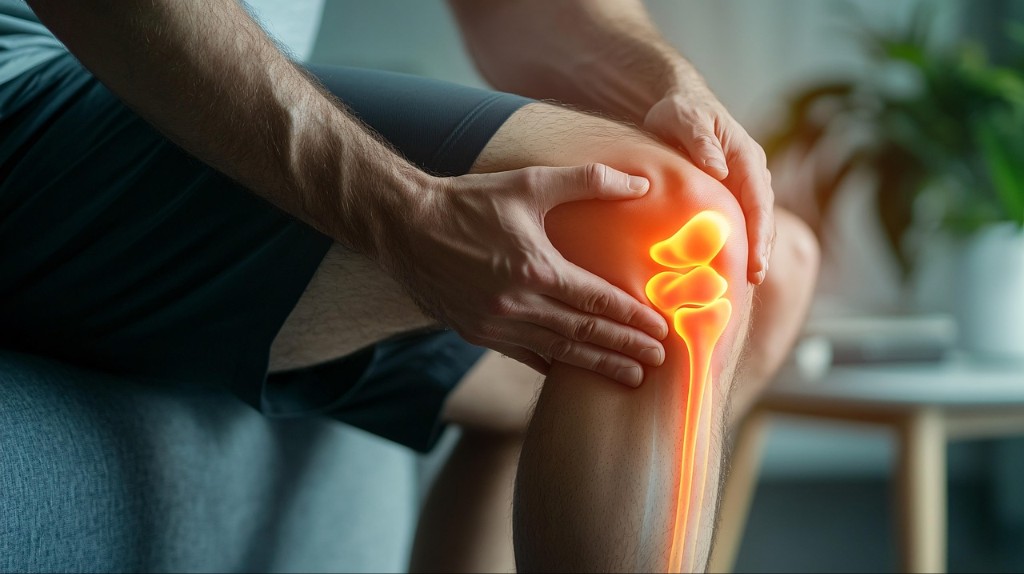Knee pain is a common condition that affects millions of people worldwide. It can range from a mild discomfort to a debilitating pain that can interfere with daily activities. For many individuals, knee pain can significantly impact their quality of life. While there are several treatment options available, not all provide the desired outcomes. As a result, patients are often left searching for alternative options that can effectively relieve their knee pain.
Shockwave therapy has recently emerged as a non-invasive treatment option that has shown promising results in managing knee pain¹. In this guide, we will explore:
- Causes of Knee Pain
- Benefits of Shockwave Therapy for Knee Pain
- How Shockwave Therapy Works for Knee Pain
- Shockwave Therapy for Various Knee Disorders
- Who is a Good Candidate for Shockwave Therapy?
- The Shockwave Therapy Procedure
- Shockwave Therapy Side Effects
- The Best Shockwave Therapy for Knee Pain
Causes of Knee Pain

Knee pain can have numerous causes, ranging from injury to underlying medical conditions. Here are some of the most common causes of knee pain:
- Arthritis: Both osteoarthritis and rheumatoid arthritis can cause knee pain. Osteoarthritis is the most common cause of knee pain in older adults, while rheumatoid arthritis is an autoimmune disorder that can affect the knee joint.
- Acute Injury: Knee injuries are a common cause of knee pain. They can occur due to falls, sports-related activities, or accidents. Common knee injuries include ligament sprains or tears, meniscus tears, and fractures.
- Tendonitis: Tendinitis occurs when the tendons in the knee become inflamed or irritated. This can cause pain and stiffness in the knee and can be caused by overuse, repetitive motions, or injury. Patellar tendinitis is a specific type of tendinitis that affects the patellar tendon.
- Bursitis: The bursae are small sacs of fluid that cushion the knee joint. When these sacs become inflamed, it can cause pain and swelling in the knee.
- Chondromalacia patella: This condition occurs when the cartilage on the underside of the kneecap becomes soft or damaged. It can cause pain and a grinding sensation in the knee.
- Meniscal tear: A meniscal tear is a tear in the cartilage that cushions the knee joint. It can cause pain, stiffness, and swelling in the knee.
It’s important to note that these are just some of the most common causes of knee pain. If you are experiencing knee pain, you can learn if your condition is suitable for treatment and try shockwave therapy with our New Patient Special.
Considering Shockwave Therapy?
Try SoftWave Therapy for just $69. Non-invasive healing that reaches deeper.

Benefits of Shockwave Therapy for Knee Pain
Shockwave therapy is a non-invasive treatment option effective in reducing knee pain and improving functionality. Here are some of the benefits of knee shockwave therapy.
Pain relief
Shockwave therapy has been shown to be effective in reducing knee pain. This is achieved through the use of high-energy shock waves, which are delivered to the injured area to improve blood supply and stimulate the body’s healing process. As a result, patients experience less pain and discomfort in their knees.
Improved functionality
Knee pain can significantly affect a patient’s ability to perform daily activities. Shockwave therapy can help improve knee functionality by reducing pain and inflammation, which allows patients to move more easily and comfortably.
Decreased inflammation
Inflammation is a common cause of knee pain, and shockwave therapy can help reduce inflammation in the knee joint. This is achieved by increasing blood flow to the area, which promotes the body’s natural healing process and helps reduce inflammation.
Increased collagen production
Collagen is a protein essential for connective tissue’s health and function, such as cartilage and tendons. Shockwave therapy has been shown to increase collagen production in the knee joint, which can help improve the health and function of the joint.
Overall, shockwave therapy is a safe and effective treatment option for knee pain. It has been shown to provide pain relief, improve functionality, decrease inflammation, and increase collagen production in the knee joint.
How Shockwave Therapy Works for Knee Pain
Shockwave therapy is a non-invasive treatment option that uses high-energy acoustic waves to stimulate the body’s natural healing process. Here’s how it works:
What is a Shockwave?
Shock waves are rapid acoustic pulses that consist of a high-pressure surge followed by a comparatively lower-pressure trough. These phenomena are a part of our everyday life and can be produced by various sources such as supersonic aircraft, explosions, lightning, earthquakes, or any other event that causes a change in air pressure.
How Does Shockwave Therapy Help with Knee Pain?
A device is used to produce and safely deliver shockwaves to the affected area of the knee. These shockwaves can promote healing in the knee at the cellular level, improve blood supply, and initiate the body’s natural healing process.
Types of Shockwave Therapy
While there are many types of shockwave therapy on the market, the three most common are radial shockwave therapy (RSWT), focused shockwave therapy (FSWT), and acoustic wave therapy (AWT).
Radial Shockwave Therapy uses a hand-held device that applies pressure waves to the skin’s surface. This type of shockwave therapy is a popular option for treating conditions such as plantar fasciitis, Achilles tendinopathy, and tennis elbow. However, it may not be effective for deeper tissue injuries, and patients may require multiple treatment sessions.
Focused Shockwave therapy uses a device that delivers high-intensity shockwaves directly to the affected area. This type of shockwave therapy is often used for treating chronic conditions like plantar fasciitis and bone fractures that are slow to heal. However, it can be uncomfortable for some patients, and the intensity of the treatment may need to be adjusted based on individual needs.
Acoustic Wave Therapy uses a device that delivers low-intensity shockwaves to the affected area. This type of shockwave therapy is commonly used to improve blood flow, reduce pain and inflammation, and promote tissue healing. It is often used to treat conditions such as erectile dysfunction and cellulite. However, the low-intensity shockwaves may not be effective for treating some conditions.
broad-focused Shockwave Therapy delivers high-intensity shockwaves that penetrate a wider and deeper area of tissue (7cm x 12cm) than focused shockwaves (1cm x 12cm) or radial waves (2cm x 2cm). SoftWave for knee pain is the only broad-focused shockwave treatment widely available in the US. broad-focused shockwaves can treat the same conditions as traditional focused shockwave therapy while providing superior relief for large joints and muscle issues such as knee pain. broad-focused shockwaves may also require fewer sessions compared to radial or focused shockwave treatments.
Considering Shockwave Therapy?
Try SoftWave Therapy for just $69. Non-invasive healing that reaches deeper.

Shockwave Therapy for Knee Injuries & Conditions
Here are some of the common knee conditions shockwave therapy treats, showcasing its effectiveness and benefits in managing these ailments.
Shockwave Therapy for Knee Osteoarthritis
Shockwave therapy has demonstrated significant efficacy in treating knee osteoarthritis, particularly in reducing pain and improving function. According to a systematic review and meta-analysis, shockwave therapy outperformed several traditional treatments, including corticosteroids, hyaluronic acid, and medication, in terms of pain reduction and functional improvement. The therapy promotes tissue repair and regeneration by delivering acoustic waves that stimulate cellular activities and blood flow. This non-invasive treatment has shown a high safety profile, with no serious adverse reactions reported, making it a promising option for managing osteoarthritis symptoms effectively.
Shockwave Therapy After Knee Replacement
Early application of shockwave therapy following total knee arthroplasty (TKA) significantly enhances rehabilitation outcomes. A study from Martini et al. (2023) found that integrating shockwave therapy with physiotherapy shortly after surgery leads to superior pain control and functional recovery compared to physiotherapy alone. Patients receiving shockwave therapy showed greater improvements in active knee range of motion and performed better on functional tests like the Timed Up and Go test. These findings highlight the benefits of shockwave therapy in accelerating recovery and reducing postoperative discomfort, making it a valuable addition to the postoperative care regimen for knee replacement patients .
Shockwave Therapy for Knee Bursitis
For patients suffering from chronic knee bursitis, particularly pes anserine bursitis, shockwave therapy has been proven effective in reducing pain and improving function. A randomized controlled trial demonstrated that patients receiving shockwave therapy experienced significant reductions in pain scores both immediately after treatment and eight weeks later, compared to those receiving a sham treatment.
Shockwave Therapy for Meniscus Tear
Shockwave therapy treats meniscus tears by enhancing tissue healing and reducing pain. The therapy uses acoustic waves to stimulate cellular activity and blood flow, which accelerates the repair of the damaged meniscal tissue. Patients undergoing shockwave therapy for meniscus tears report reduced pain and improved knee function, allowing for a quicker return to daily activities and sports. This non-invasive approach provides an effective alternative to surgical interventions, reducing recovery time and associated risks .
Shockwave Therapy for Knee Tendinopathies
Shockwave therapy is highly effective in treating knee tendinopathies and other soft tissue disorders. A meta-analysis of randomized controlled trials indicated that shockwave therapy significantly improves treatment success rates, reduces pain, and restores knee range of motion. The therapy’s efficacy varies with different types and energy levels of shockwaves, with both radial and focused shockwaves showing positive outcomes when applied over longer durations. Shockwave therapy enhances tissue remodeling and repair through mechanotransduction, making it a valuable treatment for chronic tendinopathies, providing substantial pain relief and functional improvement.
Who is a Good Candidate for Shockwave Therapy?

Some factors that make a patient a good candidate for shockwave therapy include:
- Patients with chronic knee pain
- Patients with limited success with other therapies
- Patients who prefer non-invasive treatment options
Patients who have been experiencing knee pain for an extended period of time may benefit from shockwave therapy. This includes patients with chronic conditions such as osteoarthritis, rheumatoid arthritis, and patellar tendonitis. In some cases, traditional treatments such as physical therapy and medication may not provide adequate relief for chronic knee pain.
Patients who have had limited success with other therapies may also benefit from shockwave therapy. This may include patients who have tried physical therapy, medication, or other conservative treatment options without experiencing significant improvement in their knee pain.
Finally, patients who prefer non-invasive treatment options may find shockwave therapy to be an attractive alternative to more invasive treatments such as surgery. Shockwave therapy is a non-surgical option that does not require incisions or anesthesia, which can make it a more appealing treatment option for some patients.
The Shockwave Therapy Procedure
Understanding what to expect during a shockwave therapy session is an important step for patients considering this treatment option for their knee pain. In this section, we’ll break down the shockwave therapy procedure:
- Preparation: Before the procedure, ultrasound gel is applied to the affected area. The shockwave device is then gently placed on the skin.
- During the Procedure: Patients will feel a gentle tapping or pulsing sensation as shockwaves are delivered to the injured area. Some may experience mild pain or discomfort, but anesthesia or numbing agents are not necessary. Effective communication between the patient and provider can help identify treatment hotspots and track progress.
- After the Procedure: After the 10-15 minute procedure, patients can typically resume normal activities, with no downtime for recovery required. Some doctors will recommend avoiding high-impact movements or exercise for 24-48 hours.
Shockwave Therapy Side Effects
Shockwave therapy is generally considered safe and well-tolerated, with minimal side effects. However, like any medical procedure, there is a small risk of side effects. Some of the most commonly reported side effects of shockwave therapy for knee pain include:
- Pain or discomfort during or after treatment
- Swelling or bruising
- Redness or skin irritation
- Numbness or tingling
It’s important to note that these side effects are typically mild and short-lived. Most patients can resume their normal activities immediately following the procedure.
FDA-cleared SoftWave is a safe and effective shockwave therapy for knee pain. Side effects from SoftWave are minimal and non-restrictive. It does not cause bruising or swelling, and any slight redness or soreness typically subsides within one to two days.
The Best Shockwave Therapy for Knee Pain
Are you looking for safe, reliable, and effective relief from knee pain?
SoftWave therapy is FDA-cleared, patented, and nationally recognized for its leading tissue regeneration technology. Unlike other types of high-energy shockwave treatments, SoftWave is the only shockwave therapy on the market that uses true broad-focused shock waves that treat larger and deeper areas of tissue.
Thousands of patient’s have experienced the benefits of SoftWave for knee pain, including:
- Little to no side effects
- Short treatment time
- Quick recovery
- Long-lasting results
Find a SoftWave Therapy provider near you or learn more about SoftWave and whether or not you’re eligible for full treatment today!
New Patient Special
Try SoftWave for just $69 at a clinic near you and learn if you’re a candidate for full treatment





